
NHPRC News - April 2012
NHPRC News
April 2012
In This Issue:
Inside the Commission
May 2012 Meeting
The next meeting of the Commission has been set for Friday, May 18, 2012. Meetings are open to the public, although seating is limited. Please check the NHPRC homepage for more information in late April for registration information.
Karen L. Jefferson Named to the Commission
Karen L. Jefferson, the Records Manager at the Robert W. Woodruff Library of the Atlanta University Center, has been named a Presidential Appointee to the Commission by President Barack Obama. She has over 35 years of experience as an archivist working at Howard University, Duke University, and the National Endowment for the Humanities. Ms. Jefferson is a Fellow of the Society of American Archivists and a founding member of the Academy of Certified Archivists. Ms. Jefferson received a B.A. in History from Howard University and an M.S. in Library Science from Clark Atlanta University.
Grant Deadlines
The following Grant opportunities are currently available online:
-
Digitizing Historical Records
For proposals that use cost-effective methods to digitize nationally significant historical record collections and make the digital versions freely available online.
Final Deadline: June 7, 2012 -
Electronic Records Projects
For proposals that will increase the capacity of archivists and archival repositories to create electronic records archives that preserve records of enduring historical value.
Final Deadline: June 7, 2012 -
Publishing Historical Records
For proposals to publish historical records of national significance.
Two annual competitions:
Colonial and Early National Period -- Final Deadline: June 7, 2012
New Republic through the Modern Era -- Final Deadline: October 4, 2012
Go to Grant Opportunities for more information.
News from the Field
Cold Spring Harbor Laboratory
Founded in 1890, the Cold Spring Harbor Laboratory is an internationally known research and education institution working in the areas of molecular biology and genetics to generate knowledge that will yield better diagnostics and treatments for cancer, neurological diseases, and other illnesses.
CSHL's archives was created in 1972 and works to identify, acquire, maintain, and preserve original material relating to the history of molecular biology, genetics, and biotechnology, and to make these documents available to scholars, educators, students, and the public. A recent renovation provided the archives with more space to house its records, which allows for improved access by researchers.
The archives houses 2,418 linear feet of materials related to the origins and development of CSHL and the work of prominent scientists. The collections, which document topics such as early developments in human and plant genetics, the first discussions of the Human Genome Project, and pioneering work in autism and schizophrenia, include correspondence, teaching files, lab notebooks, course lists, financial ledgers, meeting minutes, manuscripts, photographs, moving image and sound recordings, oral history transcripts, scrapbooks, and blueprints. These collections are used by scholars, educators, graduate students, writers, museum professionals, documentary filmmakers, and others from around the world. When Nature published a paper based on a collection that had recently been processed by the archives staff, authors, professors, and scholars sent in research queries related to the collections. This interest provided further impetus for the archives to provide access to all of its collections.
With support from an NHPRC grant, CSHL is conducting a 15-month project to process 19 collections of institutional records and personal papers totaling 630 linear feet, using the MPLP ("More Product, Less Process") recommendations. The collections, which represent the laboratory's entire backlog of unprocessed collections, cover the period 1890 to 2010.
As MARC records are created for processed collections and each finding aid is completed, the CSHL Library Catalog and Digital Collections database is updated and new stories are added to their blog. Among the newly processed collections are:
- Cold Spring Harbor Laboratory Audio Visual Collections (1960-2010): This collection contains recordings of talks presented during meetings and symposia, including those of world-recognized scientists. Many of these talks provide first glimpses into novel scientific ideas and reflections on scientific breakthroughs.
- Barbara McClintock Collection (1923-1992): McClintock was a pioneering and Nobel Prize-winning geneticist. This collection documents both her work and her relationships with other scientists. Although unprocessed, this is one of the archives' most-used collections.
- Roberto Malinow Collection: Malinow is in the forefront of the study of diseases of the brain including Alzheimer's disease, schizophrenia, and depression. The collection includes laboratory notebooks, correspondence, photographs, articles, and videos.
- Norton Zinder Collection: Zinder is a molecular geneticist known primarily for his discovery of a new mechanism of genetic transfer and his early work related to the Human Genome Project.
- Elof Carlson Collection: Carlson was a Nobel Prize-winning geneticist and historian of genetics. This collection includes personal and institutional correspondence, publications, articles, diaries, and photographs.
Encoded Archival Description 2002 Celebrates First Decade
Encoded Archival Description (or EAD) is a set of standards for encoding finding aids for use in an online environment, now widely implemented by archives across the United States and around the world. Work on the standards began in the early 1990s at the University of California, Berkeley, and in 1995, an EAD Working Group was established to develop a prototype, which was released three years later as EAD DTD (document type definition) and Tag Library. This prototype was based on the then-current Standard Generalized Mark-up Language (SGML).
With the advent of a new type of encoding, Extensible Mark-up Language (XML), it became clear that the EAD standards needed to be revised. With funding from the NHPRC, the EAD Working Group began work on the revision in 2000, and two years later EAD 2002 was released, and it has been in use now for the past decade. Over the years, two new systemic arrangements have been added to the standards, again based on work funded by the NHPRC. Many thousands of archival repositories around the world have implemented EAD, and the Commission recommends that projects applying for grants use Encoded Archival Description in the creation of new finding aids.
In 2010, OCLC released a paper entitled "Over, Under, Around, and Through: Getting Around Barriers to EAD Implementation" to assist organizations that have not yet adopted EAD standards. More information is also available through the Society of American Archivists.
Archive of Recorded Sound
Established in 1958, Stanford University's Archive of Recorded Sound was one of the first organized collections dedicated to the acquisition, preservation, and accessibility of historically and artistically significant sound recordings. Today the Archive of Recorded Sound numbers over 350,000 items in its collections and is both an archive of rare recordings and a library of published recordings.
The Archive of Recorded Sound houses 108 collections, and through a grant from the NHPRC, archivists are processing 84 collections, totaling some 1,661 cubic feet, including acetate transcription discs, reel-to-reel tapes, DATS, piano rolls, wire recordings, and video recordings. While most of the material of these collections contain recordings some also contain scrapbooks, legal and business papers, correspondence, photographs, concert programs, sheet music, research notes, newspaper clippings, posters, and published materials.
The collections generally fall into two separate subject categories: spoken word and music. The spoken word collections contain recordings of literature and poetry readings, historical news broadcasts, interviews with cultural and historical figures, and radio broadcasts. A few examples of collections include the Stanford Program for Recordings in Sound, the Roy Prior radio broadcasts, the Bob Arnold Collection of jazz research, and the Issei Oral History Project collection of Japanese immigrants. The music collections comprise all forms of western art music, jazz, and folk music. International opera singers and vocalists are also included in the music holdings. Examples of music collections to be processed by this project include the recordings of operatic vocalist Blanche Thebom, the symphonic and chamber music recordings of the 1940s NBC radio program "The Standard Hour," the archive of American conductor Gerhard Samuel, and the San Francisco Traditional Jazz Foundation collection. The KSFO Collection consists of audiovisual material and ephemera from this San Francisco radio station from 1956-1983. KSFO was known for their news and sports coverage, as well as the voice talents of such personalities as Don Sherwood and Al "Jazzbo" Collins. Legendary sportscasters Russ Hodges and Lon Simmons spent much of the 1960's on KSFO, announcing games for the San Francisco Giants and the San Francisco 49ers as well as Oakland Athletics baseball and Stanford University football.
Finding aids for the collections can be found on the university library's website and online catalog as well as the Online Archive of California, and the project is designing e-metrics to measure the use of the project's digital products and services. One of the unique features of the project is that archivists are tracking processing rates and creating a processing manual specifically related to sound recording collections.
Scripto
In 1800, the home where the records of the United States War Department burned to the ground, and vital historical documents were believed lost to history. But by collecting and scanning copies and materials from other collections, the Papers of the War Department project at the Roy Rosenzweig Center for History and New Media have reconstituted nearly 55,000 documents.
A community of scholarly researchers, students and teachers, and the general public are busy transcribing these documents online through the Center's newest open source tool Scripto. The tool includes a versioning history and full set of editorial controls, so that project staff can manage public contributions. This crowdsourcing serves as a case study for other documentary projects that may want to pursue similar methods for beginning transcription, measurably improving their search corpus, and creating a vibrant community of users.
At the 126th annual meeting of the American Historical Association this past January in Chicago, the whole concept of crowdsourcing history was the topic of five-minute lightning talks by nine scholar-technologists, as part of the larger "The Future Is Here: Digital Methods in Research and Teaching in History" series of digital history sessions. As part of the general philosophy of the Center, Scripto is open source and available for all to use.
The College of William and Mary, for example, is using Scripto for their transcription project, "From Fights to Rights: The Long Road to a More Perfect Union." Volunteers are transcribing thousands of manuscripts such as diaries and letters from the Swem Library's special collections to make them available online. The project has begun with the transcription of materials from the Civil War Era and will continue with documents through the Civil Rights Movement.
Learn more about the tool at scripto.org.
Shipping News
Founded in 1799 the Peabody Essex Museum (PEM) stands as the oldest, continuously operating museum in the United States. The Phillips Library contains the research division of the PEM and houses collections principally concerning maritime history and art, New England culture, Essex County history and genealogy, American decorative arts, Asian art and culture, and Native American history and art.
Through an NHPRC grant, the Library, which is currently under renovation, will process and make available 74 collections of 18th and 19th century manuscripts pertaining to Massachusetts. Topics include maritime history, notable Essex County individuals and families, and volunteer militias and Civil War campaigns. These collections comprise approximately 334 linear feet and principally consist of correspondence, scrapbooks, account books, diaries, clippings, court records, photographs, maritime and shipping records, and military records. Several examples of maritime collections include:
- Enoch Richmond Ware papers, 1843-1869, concerning the business affairs of the first American merchant to establish profitable trade with West Africa
- William Sohier papers, 1797-1887, document his law career handling admiralty cases for many different ships
- Clipper ship cards, 1850-1880, printed to inform prospective passengers and freight shippers of a vessel's impending departure and containing ship's and captain's name, sailing dates, and cargo
- Choate family papers, 1680-1900, of this Salem family including materials related to lawyer and U.S. Senator Rufus Choate (1799-1859)
- Joshua Coffin papers, 1647-1855, documenting this founder of the New England Anti-Slavery Society including deeds and legal papers pertaining to the Newbury area
- Saltonstall family papers, 1772-1830, including papers for Dr. Nathaniel Saltonstall (1776-1814) of Haverhill, MA and Nathaniel Saltonstall (1784-1838) of Salem, MA
The project began in October 2011 and so far, archivists have processed several important collections, including the papers of Bryant P. Tilden with ten hand-written journals of his travels to China, Brazil, and Trieste. The papers of Captain Alexander Robinson, a Brooklyn, New York, merchant seaman who was a captain during the War of 1812, are next on the list of collections to be processed.
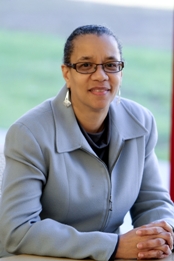 New Commission member Karen Jefferson. Photo by Oscar Daniel
New Commission member Karen Jefferson. Photo by Oscar Daniel
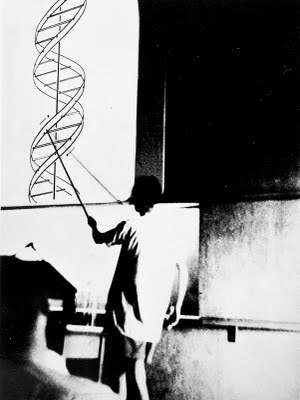 James D. Watson presenting the double helix at the 1953 CSH Symposium. Courtesy Cold Spring Harbor Laboratory Archives
James D. Watson presenting the double helix at the 1953 CSH Symposium. Courtesy Cold Spring Harbor Laboratory Archives
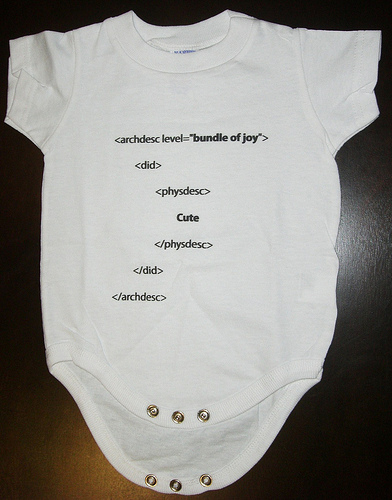 An infant s onesie, with EAD. Courtesy Kevin Schlottmann
An infant s onesie, with EAD. Courtesy Kevin Schlottmann
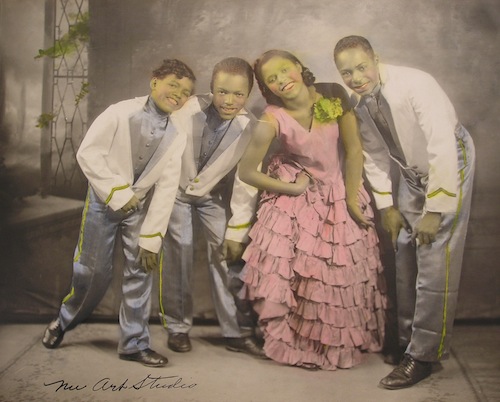 The Williams Quartet from the Bob Arnold Collection. Courtesy Archive of Recorded Sound
The Williams Quartet from the Bob Arnold Collection. Courtesy Archive of Recorded Sound
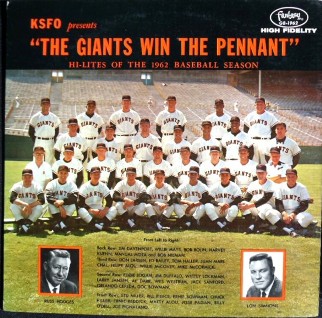 KSFO s album celebrating the San Francisco Giant s 1962 championship. Courtesy Archive of Recorded Sound
KSFO s album celebrating the San Francisco Giant s 1962 championship. Courtesy Archive of Recorded Sound
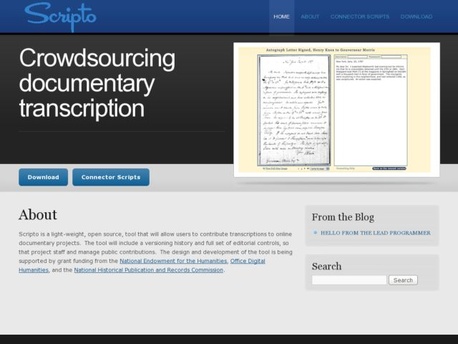 Web page from the new Scripto tool.
Web page from the new Scripto tool.
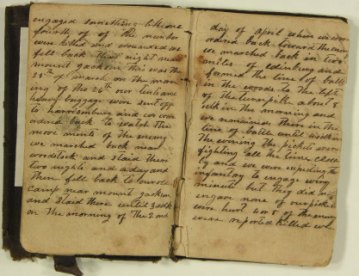 The Diary of Asa John Wyatt, 1861-1862 Courtesy Swem Library, College of William and Mary
The Diary of Asa John Wyatt, 1861-1862 Courtesy Swem Library, College of William and Mary
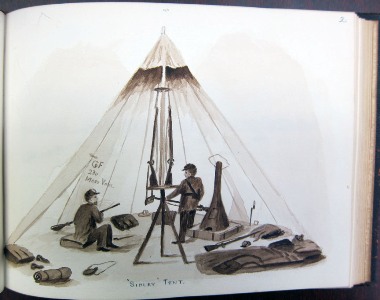 Herbert E. ValentineÂ’s sketchbook entitled 101 Brush Drawings in Sepia and Neutral Tint from Sketches made during the Civil War, dated 1903, from the archive s military collection. copyright Peabody Essex Museum
Herbert E. ValentineÂ’s sketchbook entitled 101 Brush Drawings in Sepia and Neutral Tint from Sketches made during the Civil War, dated 1903, from the archive s military collection. copyright Peabody Essex Museum
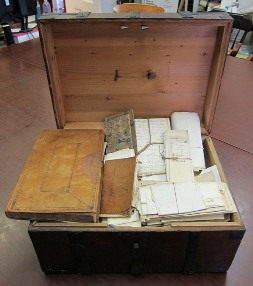 Sea chest containing Captain Alexander RobinsonÂ’s Papers (1784-1848). copyright Peabody Essex Museum
Sea chest containing Captain Alexander RobinsonÂ’s Papers (1784-1848). copyright Peabody Essex Museum